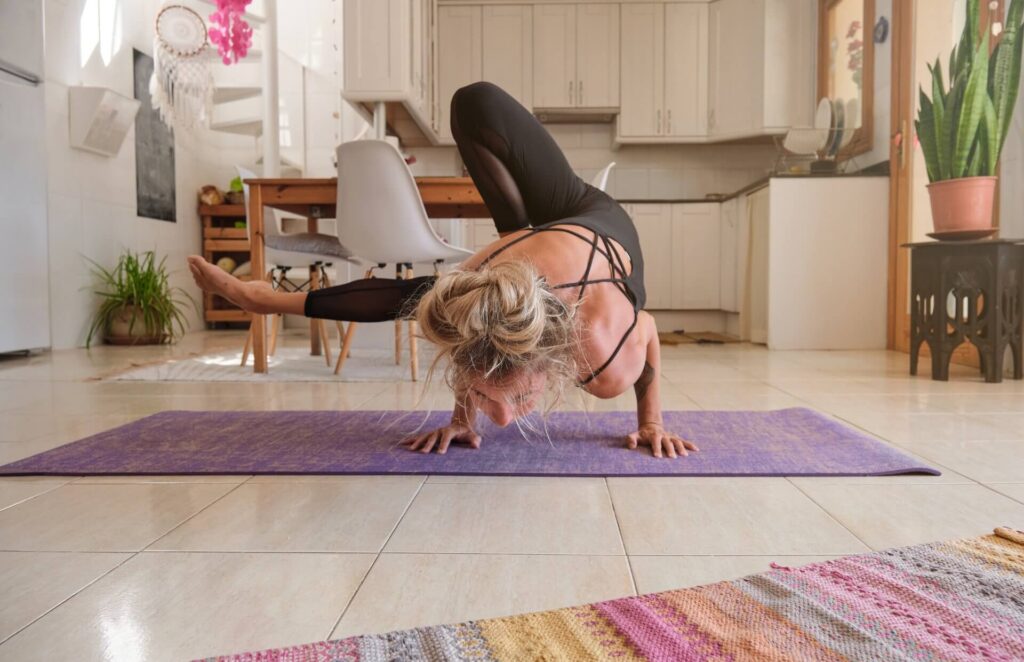In the vibrant tapestry of yoga, some asanas truly take flight, defying gravity and encouraging us to explore the extraordinary capabilities of our bodies. Today, we delve into the intricate world of Grasshopper Pose, or Maksikanagasana, an advanced yoga posture that invites us to embrace both strength and flexibility. Let’s journey into its origins, symbolism, and the physical and mental prowess it demands.
“Soar into Strength and Flexibility with Grasshopper Pose – Defying Gravity, One Asana at a Time.”
Origins and Symbolism
Grasshopper Pose derives its name and inspiration from the graceful yet powerful insect, the grasshopper. This asana symbolizes the balance between strength and flexibility, much like the agile and resilient grasshopper, which can leap great distances effortlessly. It encourages practitioners to harness their inner strength while remaining nimble and adaptable.
Strengths and Benefits
- Core Power: Grasshopper Pose engages the core muscles, fostering greater stability and strength in the abdominal region.
- Hip Flexibility: This asana is an excellent hip opener, enhancing flexibility in the hip joints and groins.
- Arm Balance: It challenges arm and shoulder strength, helping to build upper body stability.
- Focus and Concentration: Achieving and holding this pose requires intense focus, enhancing mental clarity.
How to Perform Grasshopper Pose

Perform your Grasshopper Pose with these step-by-step instructions:
- Warm-up: Begin with a thorough warm-up to prepare your hips, core, and wrists.
- Starting Position: Start in a squatting position with your feet close together. Your feet should be slightly turned out.
- Hands Placement: Place your palms on the floor in front of you, shoulder-width apart. Spread your fingers wide to create a stable base.
- Lift Off: Shift your weight to your hands and lift your hips, extending your legs forward and up. Your legs should be parallel to the ground.
- Cross Legs: Bend your knees and cross your right ankle over your left thigh, hooking your foot behind your left calf.
- Balance: Lean forward, engaging your core and arm muscles to lift your feet off the ground. Your legs should be parallel to the floor.
- Extend and Hold: Gradually straighten your arms and extend your legs, keeping them parallel to the ground. Maintain this balance for as long as comfortable.
- Release: To exit the pose, gently lower your feet to the floor and return to a squatting position.
Difficulty Level and Duration
Grasshopper Pose is classified as an Advanced asana due to its complexity. As you build strength and flexibility, aim to hold the pose for 20-30 seconds, gradually extending the duration with practice.
Final Thoughts
As we conclude our exploration of Grasshopper Pose, we find inspiration in the graceful resilience of the grasshopper. This asana beckons us to defy gravity, test our limits, and soar into new realms of strength and flexibility.
May you embrace the challenge, finding both physical and mental growth on your yoga journey. As you practice Grasshopper Pose, let it be a reminder that you possess the strength and grace to conquer obstacles and leap forward on your path to self-discovery and well-being.


